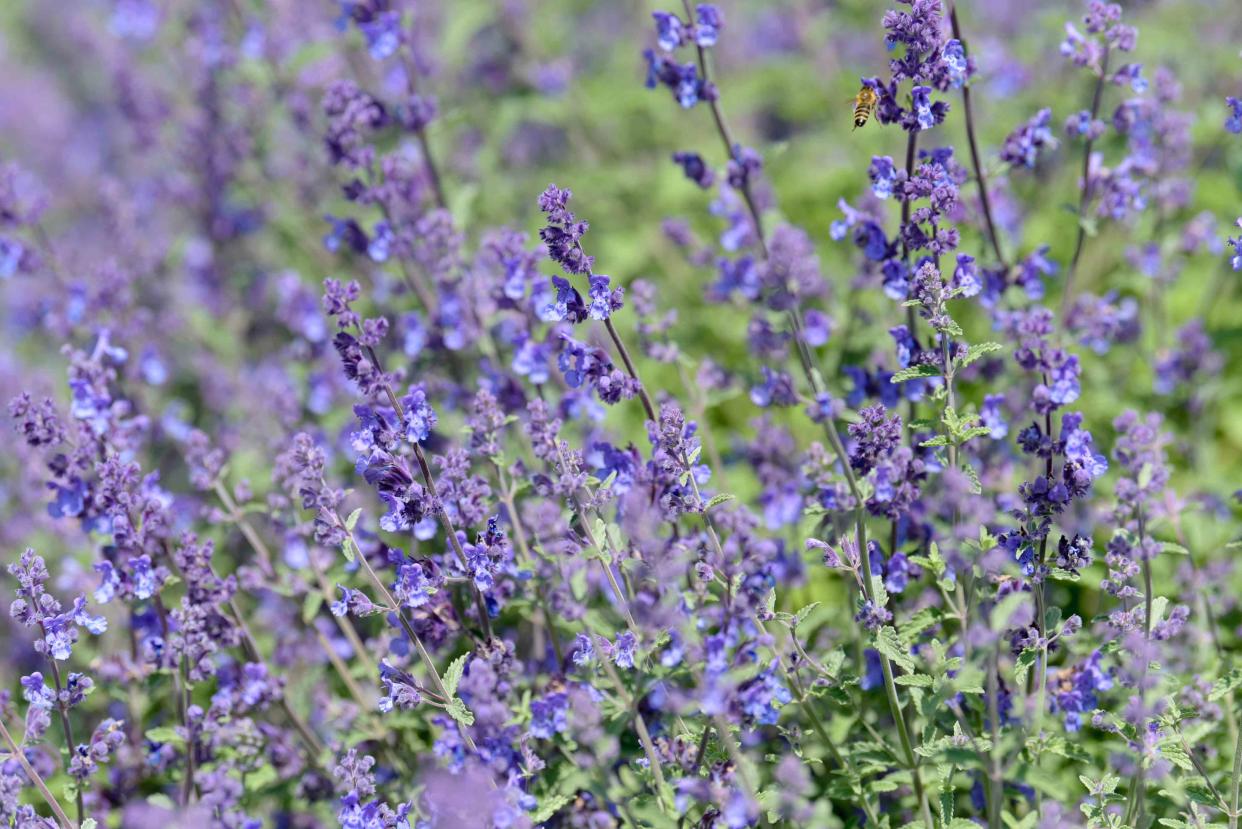7 Flowers That Naturally Repel Insects

The Spruce / Evgeniya Vlasova
Insects can wreak havoc on our flowers by chewing and sucking, leaving frustrated gardeners to ponder whether to fight back with chemical pesticides or organic poultices. However, there is another solution to avoid this problem.
We've gathered seven flowers that naturally repel insects due to soapy sap, succulent leaves, hairy foliage, and other natural defenses, meaning you have more time to devote to weeding, bouquet gathering, or just relaxing in the garden.
Bloody Cranesbill

Not to be confused with the annual pelargonium many people refer to as geraniums, the true perennial geranium is an option for gardeners from Alaska to Florida. Although you can choose from popular named varieties like 'Johnson's Blue,' 'Ann Folkard,' or the mysterious 'Dark Reiter,' horticulturists have not removed the desirable hardy characteristics from this unassuming wildflower. Plant in average soil in partial shade, and enjoy the ornamental divided foliage when flowers fade.
Russian Sage

The Russian sage is an indispensable plant for the sunny perennial border, attracting beneficial bees but offering nothing to browsing bug pests. This is due in part to a combination of a bracing herbal aroma, and tough, fuzzy foliage. Gardeners will appreciate the waving blue wands of foliage from early summer until fall on plants that need no deadheading, supplemental irrigation, or fertilizing. Pull up young runners in the spring to keep Russian sage in check.
Butter Daisy

It's a wonder that the cheerful annual Melampodium divaricatum hasn't earned a rightful place alongside zinnias and marigolds as a favorite bedding plant. The plants are easy to start from seed, and they stay smothered in one-inch yellow blossoms all season. No need to save seed for the next summer's blooms, as these plants self-seed easily. All they need is a location in full sun and regular watering. Plant with equally easy purple gomphrena flowers for a low-maintenance border or mailbox planting.
Lavender

The Spruce / Evgeniya Vlasova
If you have an area of full sun and well-drained soil, you have the opportunity to grow one of the most beloved perfume-yielding plants. Both the leaves and flowers of lavender are fragrant, yielding material for potpourri and bouquets. Although insect pests won't bother lavender, root rot, and mold can be problems for this Mediterranean plant.
Plenty of sun, raised beds amended with sand and gravel, and good spacing to promote air circulation will ensure that your lavender plants will return for many seasons.
African Lily

Agapanthus africanus, the lily of the Nile, has the kind of thick, strappy foliage that shrugs off insect invaders with ease. As a tropical perennial, the blue or white flowering plant will only come back reliably in USDA growing zones 8 through 11, but you can grow the plants from rhizomes in the container garden.
Dianthus

The Spruce / Evgeniya Vlasova
It seems that insects abhor the spicy clove scent of cottage pinks as much as we love it. The perennial dianthus was born to thrive in the rock garden, as sharp drainage is an essential habitat feature for the success of this spring flowering plant. Try 'Firewitch,' named the Perennial Plant of the Year 2006 for its brilliant pink flowers that pop against blue foliage.
Catmint

The Spruce / Evgeniya Vlasova
Whether or not you like cats, you should include the famed Nepeta 'Walker's Low' in your perennial garden if pests are a problem. Not only does this blue-blooming hummingbird magnet deflect insects, but rabbits and deer pass it by as well. Try a pretty carpet of several plants as a companion planting in a rose garden.
